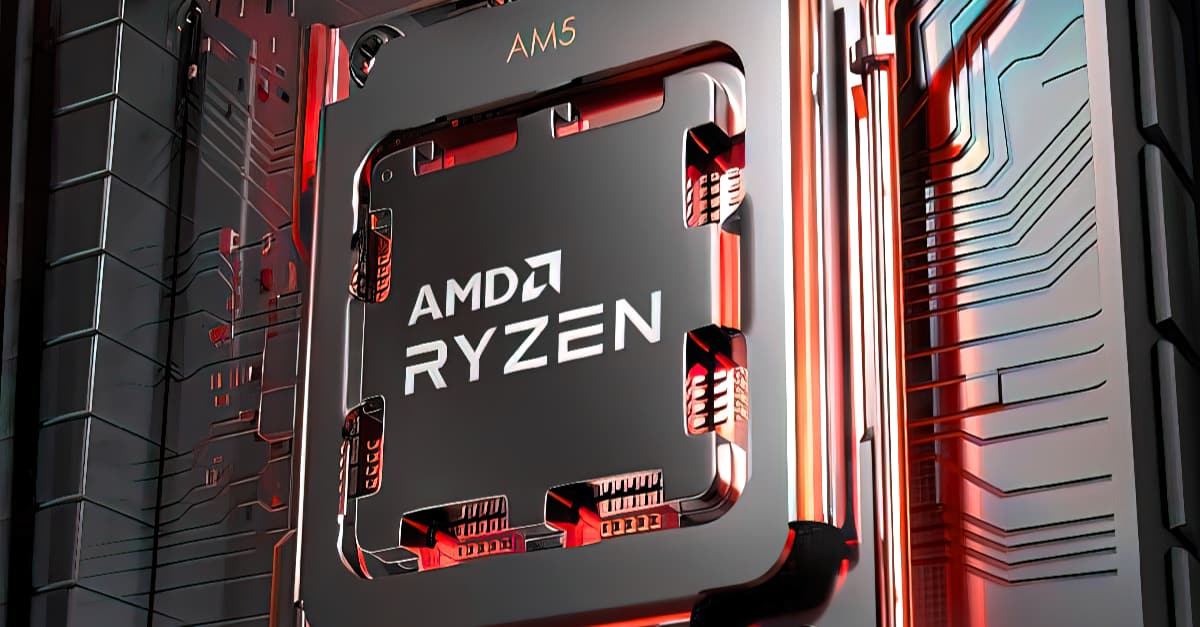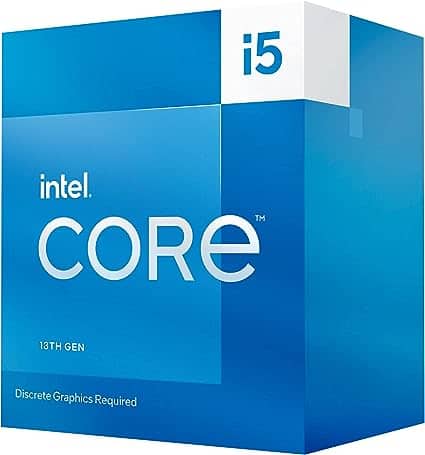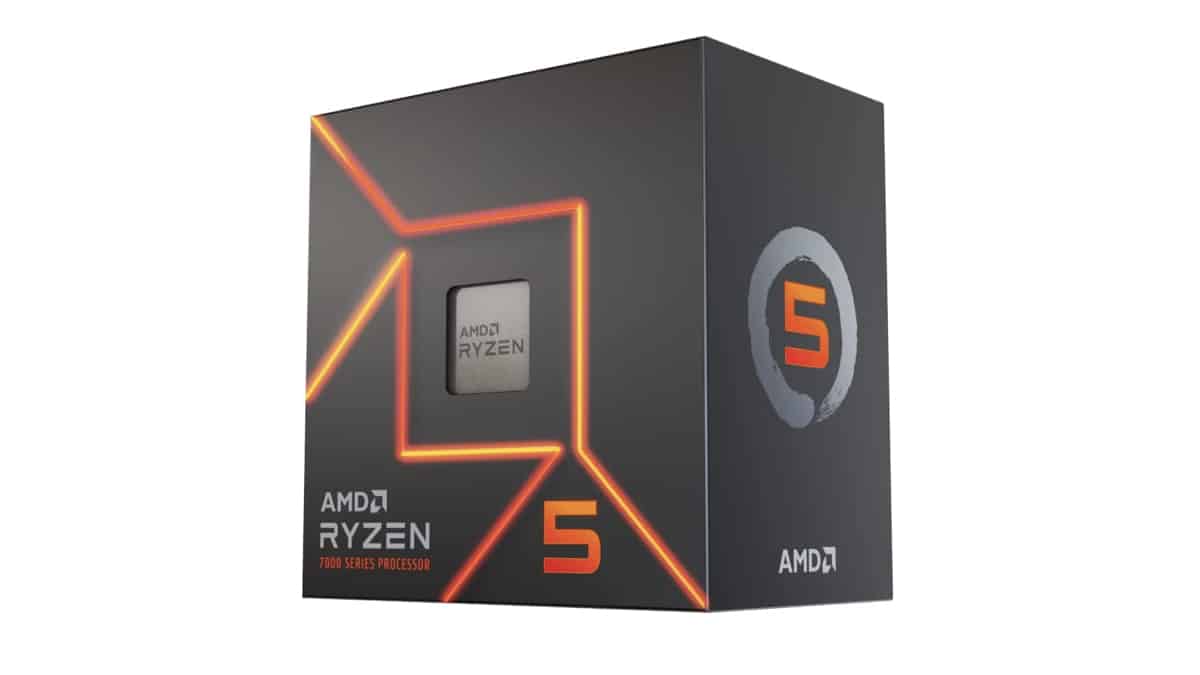Intel Core i5-13400 vs Ryzen 5 7600

Table of Contents
One of the most prominent characteristics of the new CPU generation is pricing. Both Intel and AMD have understood that CPU prices were over the moon and decided to cut them making their individual technologies more accessible for users all across the board. The Core i5 and the Ryzen 5 are entry-level processors and the less expensive lines. Below, we will pit these two processors in a contest, a battle of specs to see which chip is the most superior and where the differences lie in a bout of the Core i5-13400 vs Ryzen 5 7600.
To start, we must first reckon that Intel has done an amazing job with its 13th gen line of chips in general. This is a well thought, solid, and fast set of processors that are also nicely priced. Intel worked over years of processes and delivered to the public what they wanted most: a strong and versatile processor capable of both productivity work and gaming.
Prime Day is finally here! Find all the biggest tech and PC deals below.
- Sapphire 11348-03-20G Pulse AMD Radeon™ RX 9070 XT Was $779 Now $739
- AMD Ryzen 7 7800X3D 8-Core, 16-Thread Desktop Processor Was $449 Now $341
- ASUS RTX™ 5060 OC Edition Graphics Card Was $379 Now $339
- LG 77-Inch Class OLED evo AI 4K C5 Series Smart TV Was $3,696 Now $2,796
- Intel® Core™ i7-14700K New Gaming Desktop Was $320.99 Now $274
- Lexar 2TB NM1090 w/HeatSink SSD PCIe Gen5x4 NVMe M.2 Was $281.97 Now $214.98
- Apple Watch Series 10 GPS + Cellular 42mm case Smartwatch Was $499.99 Now $379.99
- ASUS ROG Strix G16 (2025) 16" FHD, RTX 5060 gaming laptop Was $1,499.99 Now $1,274.99
- Apple iPad mini (A17 Pro): Apple Intelligence Was $499.99 Now $379.99
*Prices and savings subject to change. Click through to get the current prices.
AMD does not fall behind, though. Team Red's obsession with performance-per-watt and user-friendly prices guides it through a path of well-built CPUs that perform amazingly in gaming environments and give a nice battle in productivity tasks and content creation.
Intel Core i5-13400 vs Ryzen 5 7600: Specs
Spec-wise we can already see major differences between the Intel and AMD contenders. We know that Intel's 13th gen based a lot of its improvement on a hybrid architecture. This means it dived the workload on P-cores and E-cores. P-cores, or productivity cores, take care of all the heavy lifting, while efficient cores help with other specific tasks. Thus, the Intel i5 needs more cores and threads to function.
In this regard, we can see a big difference between the cores and threads of each unit. The Intel processor has 10 cores and 16 threads, while the Ryzen 5 has 6 cores and 12 threads. The way Intel manages its cores should give its processor an advantage over AMD on multi-threaded workloads but we'll talk about that in a bit
| Intel Core i5 13400 | Ryzen 5 7600 | |
| Cores/Threads | 10/16 | 6/12 |
| Frequency | 2.5 GHz | 3.8 GHz |
| Boost clock speed | 4.6 GHz | 5.1 GHz |
| Process Size | 10 nm | 5 nm |
| Socket | Socket 1700 | Socket AM5 |
| Cache L3 | 20MB | 32MB |
| TDP | 65 W | 65 W |
| Launch MSRP | $221 | $229 |
Besides cores and threads, another great aspect to pinpoint here is TDP. As opposed to the direction AMD went with the X version of the CPU generation, the non-X CPUs have lower TDP down to a point where it really seems to follow AMD's philosophy. Both CPUs in the comparison have a TDP of 65W, which talks about power efficiency. Having a CPU working on that thermal design means quieter and cooler rigs, thus less investment in cooling systems.
Intel Core i5-13400 vs Ryzen 5 7600: Price
AMD has always been keen to provide the best prices on the market. The Ryzen 5 7600 has just been released at an MSRP of $229. This is the most entry-level CPU of all the SKUs that AMD has dropped lately and shows Team Red’s commitment to creating technology that's accessible to everybody.
However, Intel released the last generation with a clear objective in mind: dropping prices, as well as competing with AMD. In this case, the entry-level Intel Core i5 13400 was dropped at around the same price as the Ryzen processor, with an MSRP of $221, just $8 lower.
The main difference is building costs. Intel decided to keep backward compatibility with the socket 1700, while AMD is moving on ahead to AM5 connections. This means a blow to the actual cost of building the rig, due to the high price of AM5-ready motherboards.
Intel Core i5-13400 vs Ryzen 5 7600: Performance
Performance is where we can see the specs going to work. We haven't gotten the opportunity to see real-life benchmarks of the Ryzen 5 7600 because it has only just been released, but we will see them soon. However, based on the specs table we can arrive at precise conclusions.
The Core i5 bases its power on its hybrid architecture, which divides the workload into P-cores and E-cores. This way, they can have the more powerful cores taking care of the most thread-demanding tasks while the e-cores target background tasks that run all the time but require less energy. This system helps with power efficiency but mainly with multithreading tasks. So, the Intel contender will work better than the AMD one in productivity tasks or all-core demanding activities.
Gaming or some particular content creation tasks does not, typically, enter into that category. These are mainly single-core demanding tasks, meaning that one core of the CPU will be used at its maximum capacity, and here is where the L3 cache gets to work. As we can see in the table, the Ryzen 5 sweeps the floor with Intel's L3 cache memory.
AMD built its CPU with overall usage, but gaming is its specialty and it can't be beaten so easily in that category. The enhancement and improvement of cache memory are one of the best cards Team Red has. It is so knowledgeable of it that it even has an entire family of CPUs that bases its whole performance on a 3D V-cache platform.
Intel Core i5-13400 vs Ryzen 5 7600: Final thoughts
In conclusion, both CPUs are great units for entry-level builders. Actually, at the rhythm technology is advancing, we will get to a time when entry-level will be able to run virtually anything. However, the difference in architecture and approaches marks down the performance and objective user for these two types of CPUs.
If you're mainly a gamer that wants the best CPU performance for your competitive video games or wants to help your GPU to increase FPS as much as possible without breaking the bank, then The Ryzen 5 7600 is your best choice.
On the other hand, if productivity work and versatility are what drive you, then you'll want to go with the Intel Core i5-13400. This CPU will ensure smooth butter-like performance in as many activities as you can think of, while not leaving gaming too far behind.



